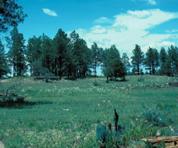Point of Pines Sites facts for kids
|
Point of Pines Sites
|
|

One of the sites
|
|
| Lua error in Module:Location_map at line 420: attempt to index field 'wikibase' (a nil value). | |
| Location | San Carlos Apache Indian Reservation, Graham County, Arizona, USA |
|---|---|
| Nearest city | San Carlos, Arizona |
| NRHP reference No. | 66000182 |
Quick facts for kids Significant dates |
|
| Added to NRHP | October 15, 1966 |
| Designated NHL | July 19, 1964 |
The Point of Pines Sites are a group of important archaeological places. They are located on the San Carlos Apache Indian Reservation in Arizona, USA. These sites are special because they show signs of three major ancient cultures of Arizona: the Ancestral Pueblo, Mogollon, and Hohokam peoples.
A famous archaeologist named Dr. Emil Haury chose this area for a "field school." A field school is where students learn about archaeology by digging and studying real sites. His school worked here from 1946 to 1960. They found many clues about the people who lived there long ago. Because of their importance, these sites were named a National Historic Landmark in 1964. This means they are very special places in American history.
Exploring the Point of Pines Area
The Point of Pines area is a high, flat land within the San Carlos Reservation. It is surrounded by the Nantack Ridge and the Willow Mountains. The Nantack Ridge is a steep, cliff-like landform. Both the ridge and the flat land have many signs of ancient people living there for a very long time.
This area was perfect for archaeologists to continue their research. The University of Arizona had already started similar studies at places like Kinishba. For a long time, the sites here mostly showed the Mogollon Culture. This culture was first identified by Dr. Haury and other researchers.
Ancient People and Their Cultures
After the 1200s, new groups of people seemed to move into the Point of Pines area. Some were likely the Ancestral Pueblo people from the Colorado Plateau. Others might have been the Hohokam people from the Safford region. This mix of cultures makes Point of Pines very interesting.
Archaeologists found a type of pottery called Jeddito ware here. This pottery came from the Hopi homeland, far away. This shows that people at Point of Pines traded with the Hopi. It might even mean that some Hopi people moved to the area.
A student of Dr. Haury's, Terah Smiley, studied the sites. He found rectangular buildings called kivas. These kivas are special rooms used for ceremonies by Western Pueblo people. Similar kivas are still used by some Native American groups today.

